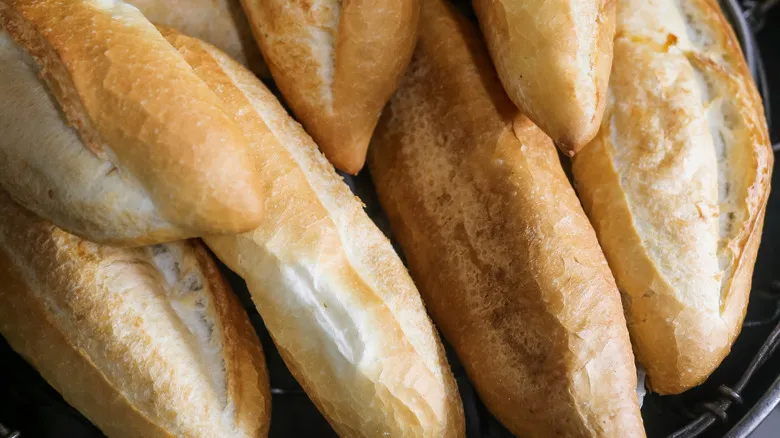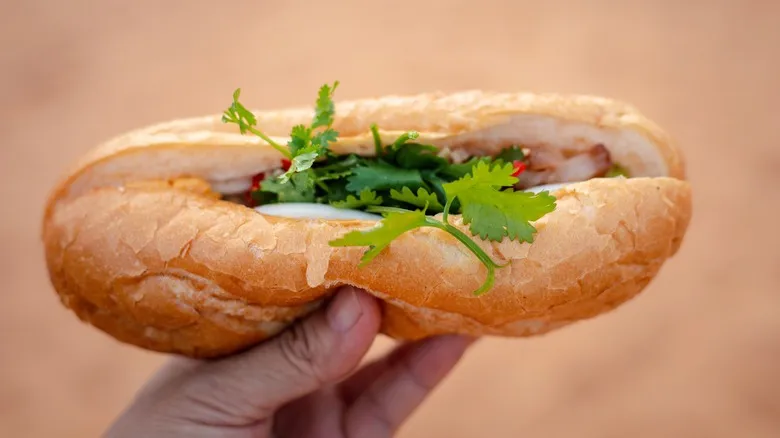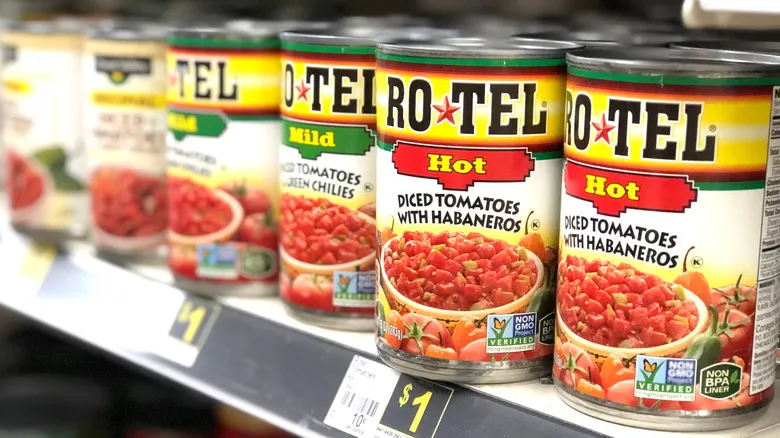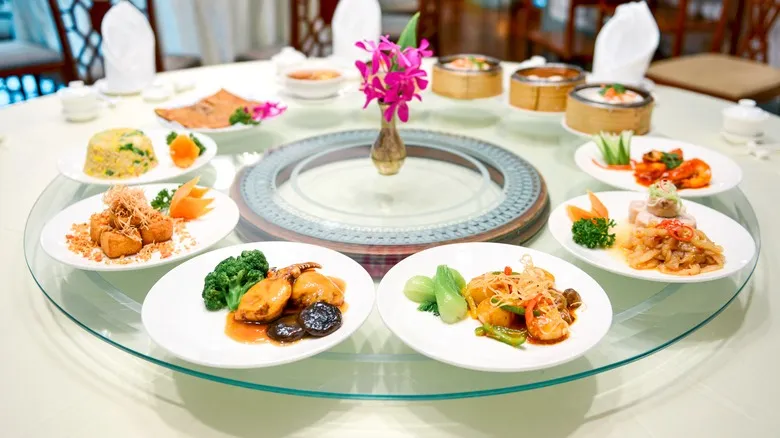Bánh mì bread has an unique composition built for the sandwich

Several elements set bánh mì bread apart from a traditional French baguette. While some may mistakenly identify a rice flour base as the primary distinguishing feature, not all bakers use rice flour; many combine it with a higher protein flour, but this is not universally practiced. The true differentiator lies in the method of preparation.
Vietnamese bakers mix their dough in a much quicker and more vigorous manner, which contributes to a lighter, airier texture. The dough is then proofed for an extended period at temperatures between 70 and 77°F. The baking process concludes in a very hot oven, utilizing convection heat and a pan of water. The steam generated is essential for achieving optimal rise, while a water spray during baking helps create a crispier crust.
Additionally, the shape of bánh mì bread is another key difference from the French baguette. The reason for the elongated shape of French baguettes remains unclear, but Vietnamese bakers have adapted the bread into a more convenient size for street-side consumption. Bánh mì is shorter and has a slightly smaller diameter. To achieve the ideal log shape, the dough must be rolled with a specific technique, making each Vietnamese bánh mì loaf an excellent vessel for sandwiches.
Seek out Vietnamese bread for delicious bánh mìs

To achieve the ideal sandwich texture, you'll need to make an effort to find the perfect baguette. A specialized Vietnamese bakery is a great place to start. If you reside in cities such as Los Angeles, Houston, or San Jose, the sizable Vietnamese community may provide you with numerous options for sourcing these loaves. Alternatively, you can opt for home delivery; establishments like the James Beard Award-winning Dong Phuong Bakery offer shipping nationwide. You can also use these essential tips to discover outstanding Vietnamese restaurants and ask if they sell their bread.
If you're feeling adventurous and have some baking skills, you might consider making your own baguettes. Besides the previously mentioned characteristics, the process involves a few logistical challenges that can be tricky to manage in a home kitchen. You'll need to maintain a precisely controlled proofing temperature and ensure your oven is extra humid. However, once you have those logistics sorted, you'll unlock the secret to creating perfect bánh mì loaves.
If your search for bread continues to be unsuccessful, think about creating a tasty variation, such as a bánh mì spiral-cut hot dog or a bánh mì-inspired taco. There are many ways to capture the delightful essence of the sandwich using a different method. Yet, there's no denying the enchanting appeal of the Vietnamese-style baguette.
Recommended

Turn A Can Of Rotel Tomatoes Into Cheese Dip With Only 2 Ingredients

Why Donuts Are Considered Breakfast Food In The US

The Myth Behind The Invention Of Kellogg's Cereal

The Traditional Reasons Chinese Restaurants Have Round Tables
Next up

